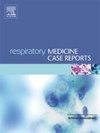Effective management of refractory chylothorax associated with elderly onset Gorham-Stout disease: A case report
IF 0.7
Q4 RESPIRATORY SYSTEM
引用次数: 0
Abstract
Gorham-Stout disease (GSD) is a rare vascular disease of lymphatic origin characterized by progressive osteolysis that commonly causes chylothorax owing to the leakage of lymphatic fluid from dissolved bones. We report a case of refractory chylothorax that was diagnosed as elderly onset GSD and treated successfully using multidisciplinary approaches. A 78-year-old male presented with persistent cough and shortness of breath caused by massive left pleural effusion. Thoracentesis and pleural biopsy revealed an initial diagnosis of idiopathic chylothorax. The patient underwent continuous thoracic drainage and several percutaneous thoracic duct embolization with subcutaneous octreotide acetate injection and a low-fat diet. Thoracoscopic surgery was performed to control the secondary empyema through the drain tube and repair the pleural lesions with lymphatic leakage. A sufficient decrease in pleural fluid volume allowed temporary removal of the thoracic drainage tube. However, thoracic drainage was resumed for refractory chylothorax when the patient gradually developed neck pain after three months. Computed tomography, magnetic resonance imaging, and bone scintigraphy revealed growing osteolytic lesions in the cervical and thoracic spine regions, and biopsy demonstrated numerous dilated thin-walled capillary structures with lymphocyte infiltrates. After diagnosing GSD and introducing sirolimus, the patient's symptoms improved, and thoracic drainage was discontinued. Multidisciplinary treatments successfully halted disease progression for over a year. The case report emphasizes the systematic examination to identify rare etiology in refractory chylothorax treatment.
老年发病Gorham-Stout病并发难治性乳糜胸的有效治疗1例
Gorham-Stout病(GSD)是一种罕见的淋巴源性血管疾病,以进行性骨溶解为特征,通常由于溶解骨的淋巴液渗漏而导致乳糜胸。我们报告一例难治性乳糜胸,被诊断为老年发病的GSD,并成功地采用多学科方法治疗。一名78岁男性,因大量左侧胸腔积液导致持续咳嗽和呼吸短促。胸腔穿刺和胸膜活检初步诊断为特发性乳糜胸。患者接受了持续胸腔引流和多次经皮胸导管栓塞,皮下注射醋酸奥曲肽和低脂饮食。胸腔镜下经引流管控制继发性脓胸,修复胸膜淋巴渗漏病变。胸腔积液量的充分减少允许暂时取出胸腔引流管。然而,当患者在三个月后逐渐出现颈部疼痛时,再次进行胸腔引流。计算机断层扫描、磁共振成像和骨显像显示颈椎和胸椎区域骨溶解病变的增长,活检显示大量扩张的薄壁毛细血管结构伴淋巴细胞浸润。在诊断出GSD并引入西罗莫司后,患者症状得到改善,并停止胸腔引流。多学科治疗成功地阻止了疾病进展一年多。本病例报告强调在治疗难治性乳糜胸时应进行系统检查,以确定罕见的病因。
本文章由计算机程序翻译,如有差异,请以英文原文为准。
求助全文
约1分钟内获得全文
求助全文
来源期刊

Respiratory Medicine Case Reports
RESPIRATORY SYSTEM-
CiteScore
2.10
自引率
0.00%
发文量
213
审稿时长
87 days
 求助内容:
求助内容: 应助结果提醒方式:
应助结果提醒方式:


